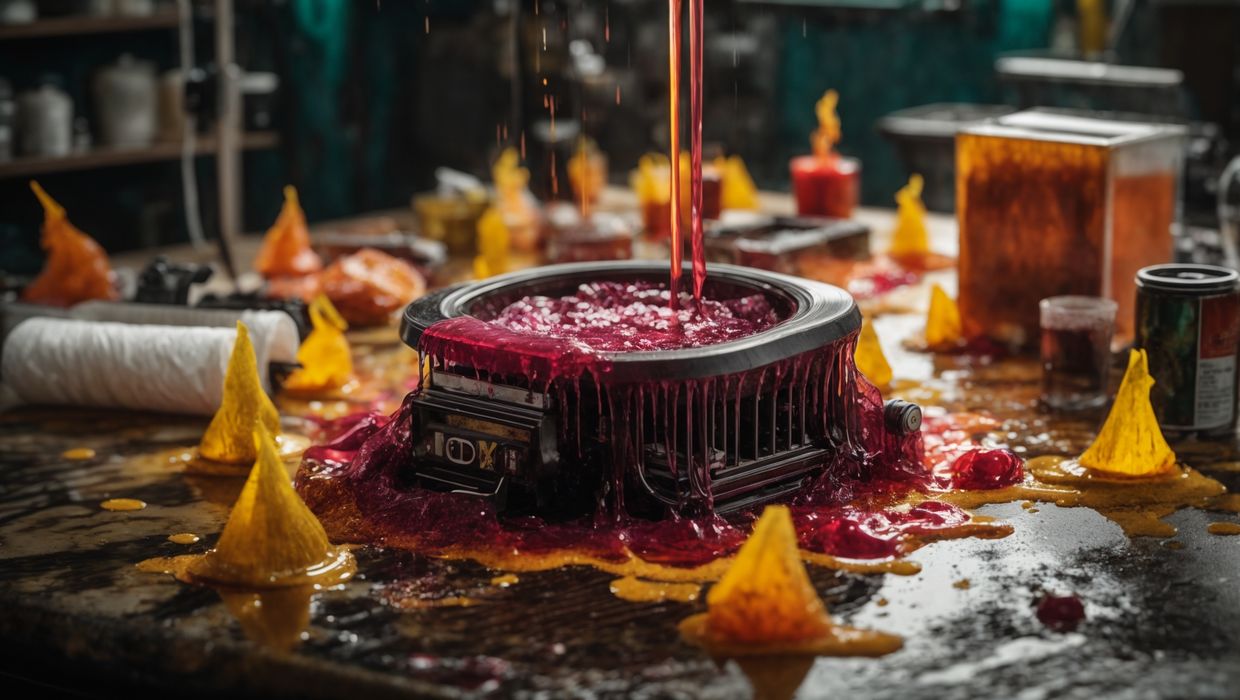
Could desktop resin 3D printers be banned in the near future?
That statement certainly sounds outrageous, especially if you are one the increasing number of folks using desktop MSLA resin 3D printers. However, there are reasons this is actually a possibility.
MSLA 3D printing has exploded in the past couple of years for several reasons:
- Availability of very inexpensive MSLA 3D printers, some less than US$200 in price
- Ability of MSLA 3D printers to produce objects with extreme resolution and detail
- Accessibility of complex and interesting 3D models through a variety of online sources
These machines are extremely popular with gamers, who seek figurines for their activities. The demand is exceptional.
As an example, I recently donated a couple of inexpensive resin 3D printers to a local business. The business hired three young interns over the summer period, and these interns were apparently extremely attached to the resin 3D printers that were made available to them. Apparently during their internship the machines were running 24/7 producing figurines for them.
Similar interest around the world has caused a huge number of these machines to be installed in homes everywhere.
But they’re not particularly safe.
As we’ve written many times previously, 3D printer resins are toxic. Skin, eyes and the rest of your body should not be exposed to the resin. You should not be breathing in emissions from resin.
As your body accumulates the toxic molecules it will eventually reach a point where a reaction occurs, and that can range from annoying to painful.
The problem is insidious because one can be exposed for a quite a while, perhaps years, before any visible reaction occurs, and then it’s too late: your body is compromised forever and will react strongly whenever near resins.
Because of this it’s critical for resin 3D printer operators to meticulously follow PPE rules for handling wet prints and resin, as well as ventilating away the resin emissions in the air.
Even the most careful 3D print operators occasionally get exposed because the devices are simply not designed for safe use. Even if all procedures are followed, you still end up with an amount of uncured toxic resin contained in paper towels used to wipe up messes. These are typically sent to the landfill and not safe-cured before disposal or taken to toxic waste disposal services.
That’s all very hard to do for many people, and ventilation is sometimes impossible due to the nature of the building holding the 3D printer. Buyers think it’s just a matter of pushing the “print” button, but in fact there is a long series of careful steps required to safely operate the device.
I’m certain that a large portion of resin 3D printer operators don’t properly follow these rules. Some resin 3D printer operations I’ve seen have a thin coat of toxic resin over everything: the tools, the table, the printer touchscreen, etc. That’s never good.
We can therefore expect to see an increasing number of resin-sensitive victims appear in future years. Their numbers will only grow, as resin sensitivity does not go away.
Eventually someone is going to complain to the authorities about these machines and resins, and investigations will follow.
Several outcomes are possible.
One is that the inexpensive and basically unsafe MSLA devices we see today could be banned outright or at least forced to provide much more significant warnings and instructions for buyers.
Another possible outcome, one that I’d greatly prefer, is that MSLA manufacturers get ahead of the game and design better equipment.
Today’s MSLA 3D printer designs are focused on simply getting a good print. There is often little concern for safety as machines typically don’t include proper air filtration. Some machines seem pathologically designed to maximize the possibility of resin drips as you process a print.
The basic issue is that MSLA 3D printing is more than just a printer: you require a washing step and a curing step that are most often done outside the printer itself. This implies that wet, drippy toxic prints must be handled, greatly raising the possibility of exposure.
MSLA machines should be fundamentally redesigned to completely isolate humans from toxic resin. They should contain all aspects of the production process, including not only printing, but also washing and curing. Operators should be able to lift out a completed print safely, just like they do with FFF 3D printers.
Is that asking too much? I don’t think so, but clearly it would make machines more expensive. Is that an issue when the cost of machines now is so low? Could we trade some cost for safety?
For some, the allure of magical 3D printing exceeds the value of safety, which in my mind isn’t a good trade. More likely is that most 3D printer operators just don’t have a proper appreciation for the toxic dangers involved and the steps necessary for truly safe use, and that’s why they don’t take that trade today. Perhaps if they did understand the actual situation they’d be willing to pay more for safe equipment.
However, those decisions aren’t really practical at this point because none of the low-cost MSLA producers seem to be going in that direction.
Maybe some regulations would help.
